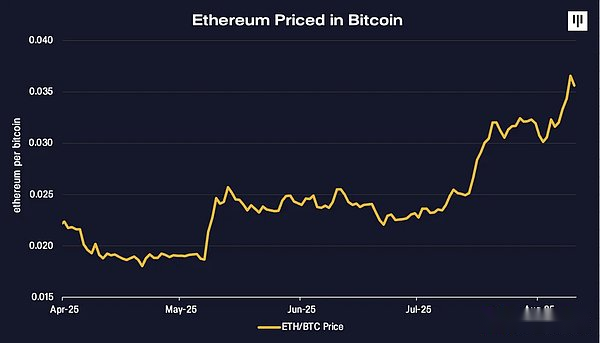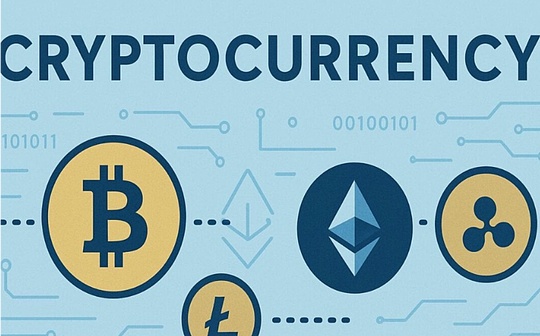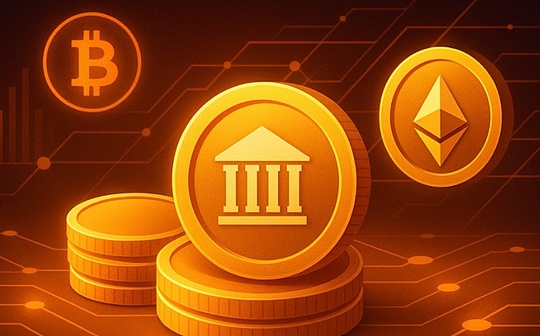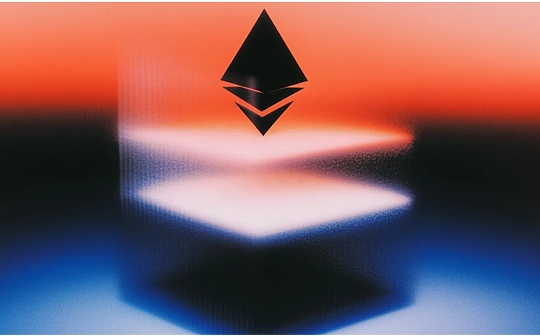
Author: Erik Lowe, content manager at Pantera Capital; compiled by: Bitchain Vision
Bitcoin often leads the bull cycle, while altcoins lag behind in the early stages.As the cycle progresses, altcoins tend to gain momentum and outperform Bitcoin at the end of the cycle.We call it the “first phase” and “second phase” of the bull market.
Importantly, altcoins have contributed most of the value creation in the past two cycles.During the 2015-2018 cycle, altcoins contributed 66% of the total market capitalization growth of cryptocurrencies.In the 2018-2021 cycle, altcoins contributed 55%.
So far, altcoins in this cycle account for 35% of the overall market growth.
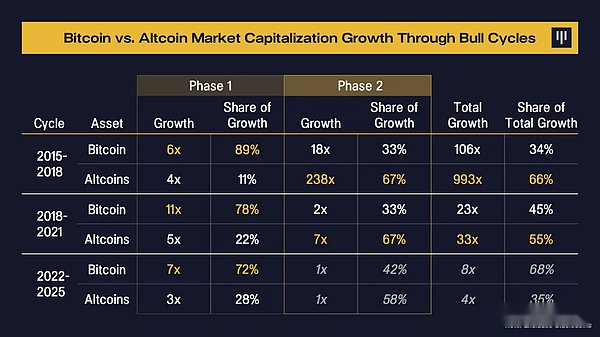 Bitcoin has long benefited from regulatory clarity – not only in its commodity classification, but also in its well-known role as “digital gold.”This has been the key driver for Bitcoin to outperform altcoins early in this cycle.Altcoins have historically faced greater regulatory uncertainty and have only recently improved.Under the leadership of the new U.S. administration, this pattern is changing, and significant progress has been made in promoting digital asset innovation.
Bitcoin has long benefited from regulatory clarity – not only in its commodity classification, but also in its well-known role as “digital gold.”This has been the key driver for Bitcoin to outperform altcoins early in this cycle.Altcoins have historically faced greater regulatory uncertainty and have only recently improved.Under the leadership of the new U.S. administration, this pattern is changing, and significant progress has been made in promoting digital asset innovation.
The clarity and tailwind factors that have historically favored Bitcoin are now starting to extend to altcoins.The market is beginning to reflect this.
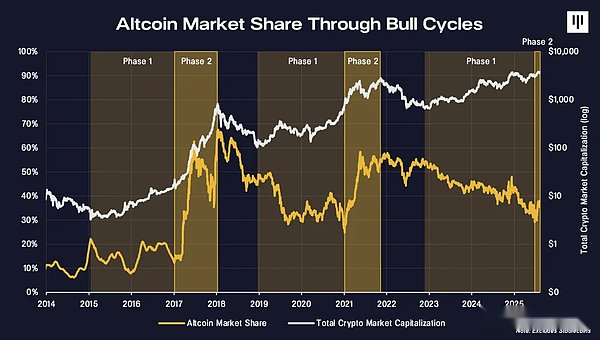 As regulatory victories continue to accumulate, momentum is increasing.Last month, President Trump signed the GENIUS Act, creating the conditions for the boom of U.S.-regulated stablecoins that are expected to become the engine of global financial transactions.The CLARITY Act, passed by the House, aims to create clearer boundaries between digital commodities and securities, helping to address the long-standing jurisdictional uncertainty between the U.S. SEC and the Commodity Futures Trading Commission (CFTC).A change is happening and we have reason to believe that non-bitcoin tokens will be one of the biggest beneficiaries.
As regulatory victories continue to accumulate, momentum is increasing.Last month, President Trump signed the GENIUS Act, creating the conditions for the boom of U.S.-regulated stablecoins that are expected to become the engine of global financial transactions.The CLARITY Act, passed by the House, aims to create clearer boundaries between digital commodities and securities, helping to address the long-standing jurisdictional uncertainty between the U.S. SEC and the Commodity Futures Trading Commission (CFTC).A change is happening and we have reason to believe that non-bitcoin tokens will be one of the biggest beneficiaries.
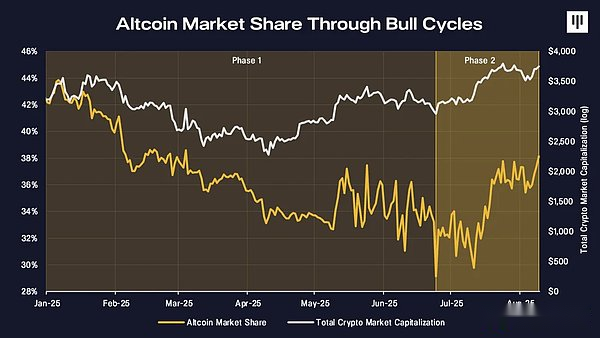 Innovation and development are accelerating, especially in the field of tokenization.Robinhood recently launched Arbitrum-powered stock tokens aimed at democratizing stock trading and creating more efficient markets.Major U.S. banks, Morgan Stanley and JPMorgan Chase are exploring the issuance of their own stablecoins.BlackRock’s BUIDL fund has amassed $2.3 billion in tokenized Treasury bonds.Figure has processed over $50 billion in blockchain native RWA transactions.In addition to tokenized Treasury Funds, Ondo plans to list more than 1,000 tokenized stocks on the New York Stock Exchange and the Nasdaq through Ondo Global Markets.On-chain migration is in progress.
Innovation and development are accelerating, especially in the field of tokenization.Robinhood recently launched Arbitrum-powered stock tokens aimed at democratizing stock trading and creating more efficient markets.Major U.S. banks, Morgan Stanley and JPMorgan Chase are exploring the issuance of their own stablecoins.BlackRock’s BUIDL fund has amassed $2.3 billion in tokenized Treasury bonds.Figure has processed over $50 billion in blockchain native RWA transactions.In addition to tokenized Treasury Funds, Ondo plans to list more than 1,000 tokenized stocks on the New York Stock Exchange and the Nasdaq through Ondo Global Markets.On-chain migration is in progress.
Ethereum drives growth in non-bitcoin market share
Most of the real world assets are flowing to Ethereum.In the $260 billion stablecoin market, 54% of the stablecoins are issued on Ethereum.73% of on-chain Treasury bonds are on Ethereum.DAT is accumulating ETH at an unprecedented rate.Wall Street is gradually aware of this and demand for ETH is soaring.
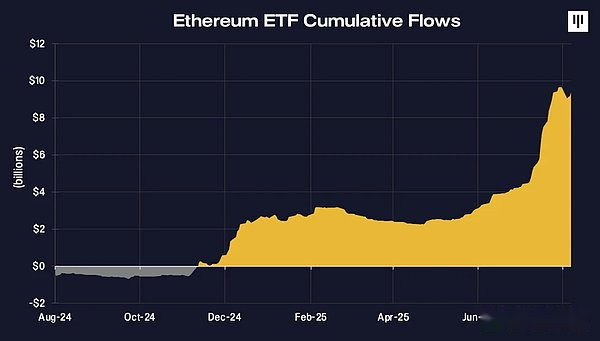 Ethereum price, denominated in BTC, has risen 103% since its bottom in April 2025.
Ethereum price, denominated in BTC, has risen 103% since its bottom in April 2025.
